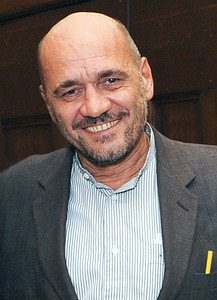Through the Eyes of the Apostles. A Presence that Overwhelms Life
The exhibition reconstructs the journey that some Jewish inhabitants of Capernaum made from the first encounter with Jesus of Nazareth to the point of acknowledging him with a faith that enabled them to lay down their lives for Him.
By making use of the fundamental knowledge deriving from the archaeological excavations carried out over the years by the Franciscans of the Custody of the Holy Land and exegetical studies of the Gospels, the exhibition aims at overcoming doubt about Christianity: “This did really happen; Jesus is not a myth, but a man made of flesh and blood, a real presence in history. We can visit the places and follow the ways he travelled. By means of witnesses, we can hear His words. He died and rose… the myths were waiting for Him, in which the desire has become reality” (Benedict XVI).
In the first part a description and a brief history of Capernaum (Kfar Nahum) is given. Today only a few archaeological remains survive, but at the time of Herod it had a certain importance from the fact that it was situated on the Via Maris, on the border between two kingdoms. The visitors will be helped to identify with the daily life of the inhabitants of the village by means of objects, reconstructions, and panels which will enable them to see and know the daily life at the time, the most common activities, the kind of houses, religion, traditions and customs.
In the second section, the witness of the Gospels will help to show how the quiet life of the village around 30 AD was deeply revolutionised by an apparently banal event – the encounter of two of the villagers, John and Andrew, with a Jew from Nazareth called Jesus, and the subsequent decision of Jesus to move here to Capernaum. No inhabitant of Capernaum could avoid meeting this unexpected newcomer. But Jesus attracted people from outside, too, and Capernaum became a place where new and unknown people came and gathered, transforming the daily life of the village.
Next attention is focussed on the personal experience of those few men whom Jesus chose as his disciples. Their unity was born from following Him, because it was the very person of Jesus who was to determine every aspect of their lives. There is a description of the journey of certainty that the disciples made. Living with that exceptional presence (that revealed itself both in the miracles and in his way of teaching and acting), their lives became more intense, more true. Christianity is born: a Presence that fulfills life.
The daily life together, an ever growing correspondence generates certainty in them, and an affective attachment.
In the last section, the archaeological discoveries at Capernaum reveal how the life of the town remained changed and marked by Jesus even after his death. His disciples went on living together united by His Memory, and by His continuing, affirmed, and acknowledged Presence; the house where Jesus had lived became first a place of veneration and then a church; villagers and strangers kept on coming to the town as pilgrims to pray in those places, as the graffiti witness.
Created by José Miguel Garcia, with the collaboration of Ettore Soranzo, Erasmo Figini, Daniela Massara, Fr. Stefano De Luca, Fr. Eugenio Alliata. Photography by Stefano Ciol, video by Paolo Lipari, with the contribution of the Custody of the Holy Land.






